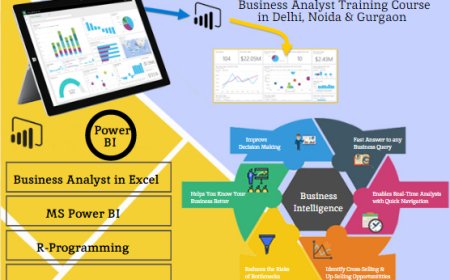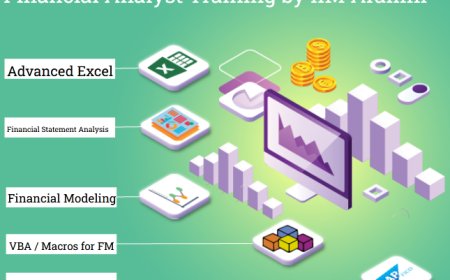Sharpen Your Edge: Essential Business Intelligence Exercises for Every Analyst
This article outlines a series of essential business intelligence exercises, categorized to help you develop a well-rounded skillset. Whether you're just starting out or looking to refine your expertise, incorporating these practices will elevate your BI game.
In today's data-driven world, business intelligence (BI) isn't just a buzzword; it's the lifeblood of informed decision-making. From identifying market trends to optimizing operational efficiency, BI empowers organizations to thrive. But like any powerful tool, its effectiveness hinges on the skill of its wielder. For aspiring and seasoned BI professionals alike, continuous practice through targeted business intelligence exercises is crucial to hone analytical prowess and unlock deeper insights.

1. Data Cleaning and Preparation: The Unsung Hero
Before any meaningful analysis can begin, data must be clean, consistent, and correctly formatted. This often constitutes the most time-consuming part of a BI project, yet it's foundational.
-
Exercise 1: Identify and Resolve Missing Values: Take a raw dataset (e.g., customer sales, website analytics). Systematically identify columns with missing values. Then, experiment with different imputation techniques (mean, median, mode, predictive modeling) and analyze their impact on the dataset's integrity.
-
Exercise 2: Standardize and Transform Data: Work with a dataset containing inconsistent entries (e.g., product names with typos, varying date formats, mixed case text). Practice standardizing text fields, converting data types, and transforming data into a consistent format suitable for analysis.
-
Exercise 3: Outlier Detection and Handling: Explore a dataset for outliers. Use statistical methods (e.g., Z-score, IQR) or visualization techniques (box plots, scatter plots) to identify them. Then, decide on appropriate strategies for handling outliers (removal, transformation, capping/flooring) and justify your choices.
2. Exploratory Data Analysis (EDA): Uncovering Hidden Stories
EDA is about understanding the characteristics of your data, spotting patterns, detecting anomalies, and formulating hypotheses. It's the investigative phase of BI.
-
Exercise 4: Descriptive Statistics Deep Dive: For a given dataset, calculate and interpret key descriptive statistics (mean, median, mode, standard deviation, variance, quartiles). Understand what each metric tells you about the data's distribution and central tendencies.
-
Exercise 5: Visualization for Insight: Use various visualization types (histograms, bar charts, line graphs, scatter plots, heatmaps) to represent different aspects of your data. Practice choosing the most appropriate visualization for the type of data and the insight you want to convey. Bonus: Try to tell a story with a series of connected visualizations.
-
Exercise 6: Correlation and Relationship Analysis: Identify potential correlations between different variables in your dataset. Use correlation matrices or scatter plots to visualize these relationships. Discuss the implications of strong or weak correlations.
3. Reporting and Dashboarding: Communicating Insights Effectively
The ultimate goal of BI is to present complex data in an understandable and actionable format for stakeholders.
-
Exercise 7: Design a Sales Performance Dashboard: Imagine you need to present key sales metrics to a management team. Design a dashboard that includes KPIs like total sales, sales by region, top-selling products, and monthly trends. Consider user experience and clear, concise presentation.
-
Exercise 8: Create an Executive Summary Report: Based on an analysis of a specific business problem (e.g., customer churn, marketing campaign effectiveness), prepare a concise executive summary report. Focus on key findings, actionable recommendations, and supporting data visualizations.
-
Exercise 9: Interactive Reporting: If you have access to BI tools like Tableau, Power BI, or Looker Studio, practice building interactive reports with filters, drill-downs, and parameters that allow users to explore the data dynamically.
4. Advanced Analytics and Problem Solving: Beyond the Basics
Once you've mastered the fundamentals, delve into more complex scenarios that require deeper analytical thought.
-
Exercise 10: Root Cause Analysis: Present yourself with a hypothetical business problem (e.g., a sudden drop in website traffic, an increase in customer complaints). Use your analytical skills to systematically investigate potential root causes by examining various data points.
-
Exercise 11: Forecasting and Trend Prediction: Given historical data (e.g., monthly sales, website visits), apply basic forecasting techniques (e.g., moving average, exponential smoothing) to predict future trends. Understand the limitations and assumptions of these methods.
-
Exercise 12: A/B Testing Analysis: If provided with data from an A/B test (e.g., two versions of a webpage, different email subject lines), analyze the results to determine which version performed better and if the difference is statistically significant.
5. Domain-Specific Challenges: Applying BI to Real-World Scenarios
The best way to solidify your BI skills is to apply them to specific business domains.
-
Exercise 13: Retail Analytics: Analyze a retail dataset to identify popular products, analyze customer purchasing patterns, or optimize inventory levels.
-
Exercise 14: Marketing Campaign Performance: Evaluate the effectiveness of a marketing campaign by analyzing metrics like conversion rates, cost per acquisition, and return on investment.
-
Exercise 15: Financial Performance Analysis: Explore financial data to assess profitability, analyze revenue streams, or identify cost inefficiencies.
Key Takeaways for Effective BI Practice:
-
Use Real-World Data: Whenever possible, work with real or realistic datasets. Kaggle, UCI Machine Learning Repository, and government open data portals are excellent resources.
-
Document Your Process: Keep a log of your steps, assumptions, and findings. This not only reinforces learning but also helps in reproducing or explaining your analysis.
-
Seek Feedback: Share your reports and dashboards with peers or mentors and solicit constructive criticism.
-
Stay Curious: Always ask "why?" and "what if?" Data analysis is an iterative process of questioning and exploring.
-
Master Your Tools: Whether it's Excel, SQL, Python (Pandas, Matplotlib, Seaborn), R, Tableau, or Power BI, dedicate time to becoming proficient with the tools of the trade.
By consistently engaging in these business intelligence exercises, you'll not only build a robust analytical skillset but also develop the critical thinking and problem-solving abilities essential for turning raw data into valuable business insights. So, roll up your sleeves, dive into the data, and start sharpening your edge today!


































